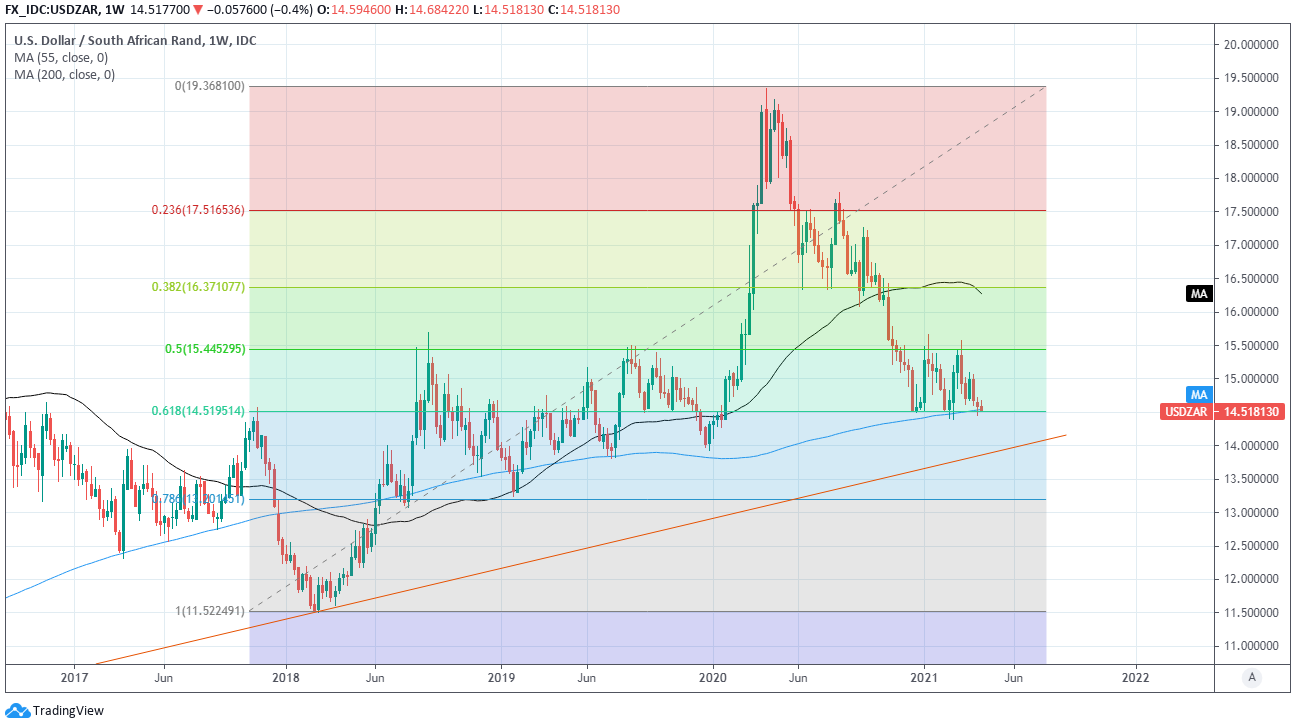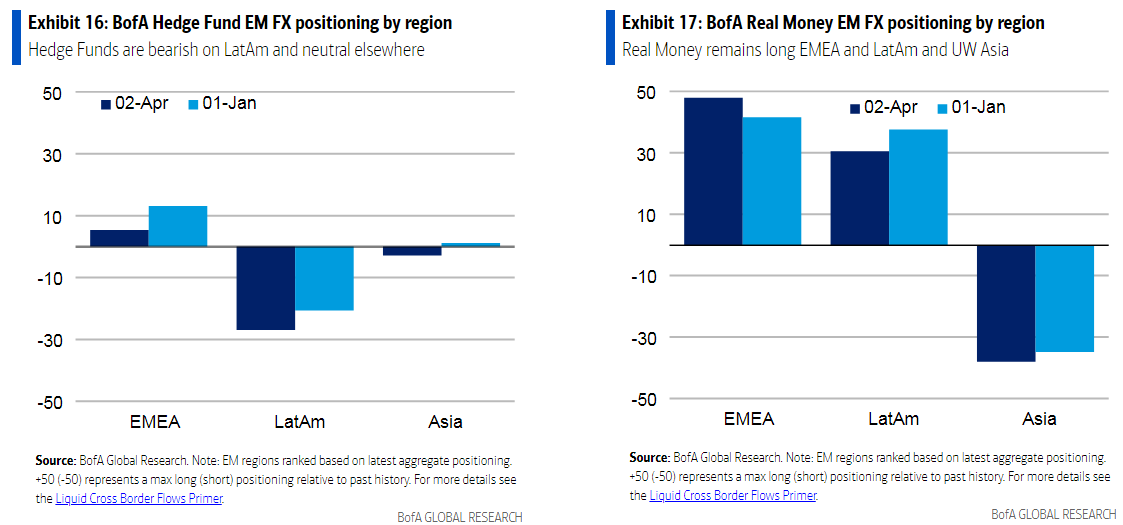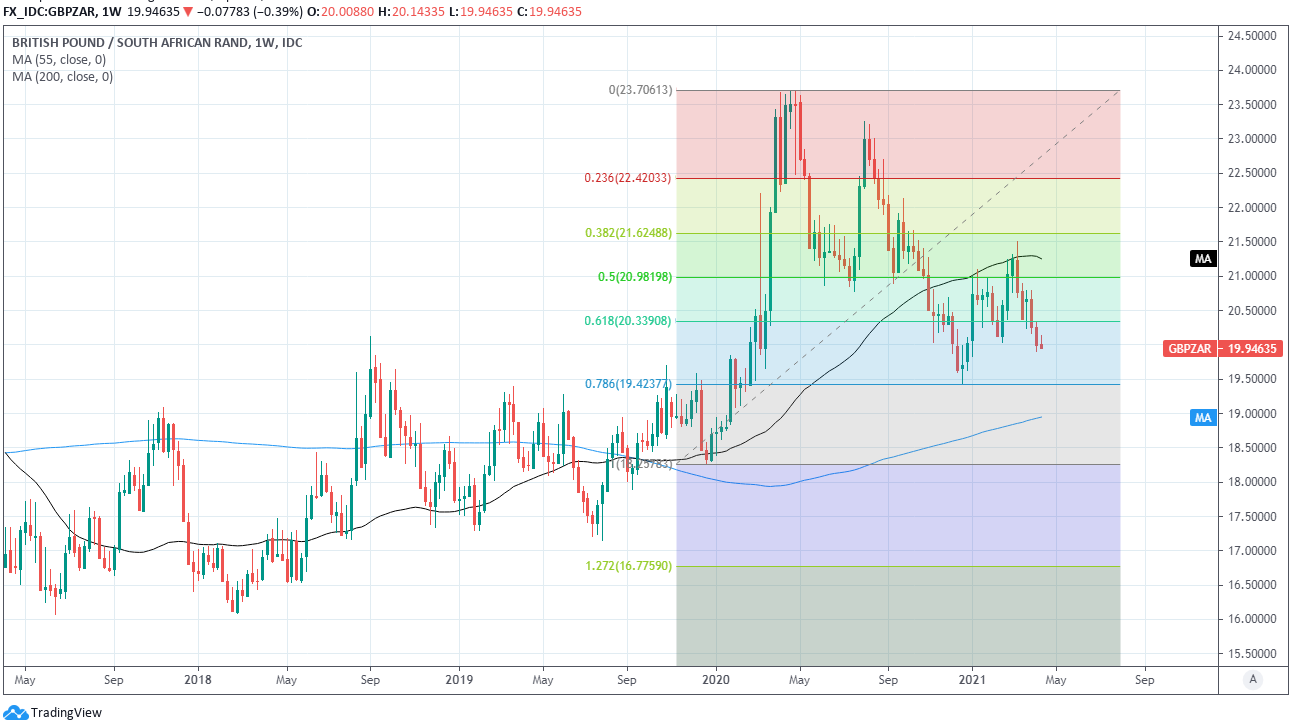South African Rand Eyes Sixteen Month Highs as U.S. Dollar Deflates
- Written by: James Skinner

© Lefteris Papaulakis, Adobe Images
- GBP/ZAR spot rate at time of writing: 19.94
- Bank transfer rate (indicative guide): 19.26-19.40
- FX specialist providers (indicative guide): 19.66-19.82
- More information on FX specialist rates here
- Set an exchange rate alert, here
The South African Rand rose on Tuesday as the U.S. Dollar appeared to deflate in the wake of March inflation data that failed to give the greenback a new lease of life, leading USD/ZAR to test a key technical support level that is the last impediment to January 2020 highs.
South Africa's Rand was higher against all major developed market currencies except the Swedish Krona on Tuesday after longer-term U.S. bond yields failed to garner new momentum from March inflation numbers that surprised on the upside, data which gave way to declines in a number of Dollar exchange rates.
Dollars were sold despite data showing inflation rising from 1.7% to 2.6% annualised last month, though with Federal Reserve (Fed) policymakers having committed to "look through" such above-target readings until they can be sure they aren't "transitory" the greenback got no help from the figures.
If anything, for the length of time the Fed remains committed to keeping interest rates at the effective lower bound even in the face of above target price pressures the Dollar could struggle to draw investors and at least in part because rising prices eat into the returns earned by holding the greenback.
Rising inflation and ebbing real returns also bolster the appeal of higher yielding emerging market currencies, which may be why USD/ZAR again tested the 61.8% Fibonacci retracement of its 2018 uptrend located at 14.51 on Tuesday.
This is the last technical impediment to USD/ZAR's 2020 low around 14.00.
"Locally the issue remains whether USD/ZAR can break lower," says John Cairns, client strategist at Rand Merchant Bank, in a Monday video update.
"Risk-reward favours buying USD/ZAR close to 14.40 support (YTD low) with a stop placed below," says Yuliya Kryzhanovska, a trader at Credit Suisse.
To the extent that Kryzhanovska's strategy is typical of that taken by Rand and Dollar traders in recent weeks, any USD/ZAR break below 14.50 could give way to sharp declines if it leads stop-losses on the south side of that level to be taken out. Triggering those stop-losses would generate USD/ZAR sell orders.
"The loan guarantee scheme, that forms part of the Covid-19 relief package, has been extended by three months in an effort to continue supporting the locally driven recovery," says Bianca Botes, an executive director at Citadel Global. 
Above: USD/ZAR testing key support level of major Fibonacci retracement and long-term moving-average.
The Rand rose against the Dollar and other major currencies Tuesday but fell against many emerging world counterparts.
This price action follows a period in which the Rand had outperformed both developed and emerging rivals over multiple timeframes and with little by way of an obvious catalyst, although strategists at BofA Global Research offered insight this week into how that now-ebbing outperformance may have come about.
"The Asian low-yielders appear to be the funding currencies. Among the high-yielders, ZAR is the least loved, and this likely partly explains why it has managed to outperform lately when many other EM currencies experienced outflows," says David Hauner, head of emerging market cross-asset strategy at BofA Global Research. "Hedge funds are most long in CZK, INR and MYR. In contrast, they are short (when compared to the historical average) in CNH and CNY, as well as in MXN and TWD."
Images © BofA Global Research. Click image to enlarge.
Currency markets have mostly been a story of investor profit-taking on earlier trades and repositioning for the next big themes this last week which, according to analysts at Goldman Sachs, is likely to see a turn in favour of the Euro and Euro-Dollar rate. That would likely benefit the Rand and weigh on USD/ZAR due to the Euro's sizeable influence over the Dollar and the South African currency's long-established negative correlation with the greenback.
Profit-taking and repositioning story has been captured by BofA Global Research strategists measuring flows coming through their franchise, where have seen investors cutting 2020 wagers against the Dollar while also pairing back bets in favour of emerging market currencies. The boon for the Rand in all of this however has been that the South African unit never actually benefited as much as other emerging market currencies from last year's sell the Dollar trend so has hardly been touched by profit-taking.
"Hedge fund positioning remains very light. In contrast, real money started the year with a stretched short USD position, particularly against the rest of G10," Hauner says. "Real money investors are most long in PLN, HUF, CLP, RUB and CNH. In contrast, short positions compared to history are TWD, KRW and ZAR. This may partly explain why ZAR has been holding up relatively well in the face of the latest outflows from EMFX."
Above: Pound-to-Rand rate shown at weekly intervals with Fibonacci retracements of 2020 rally and key averages.






